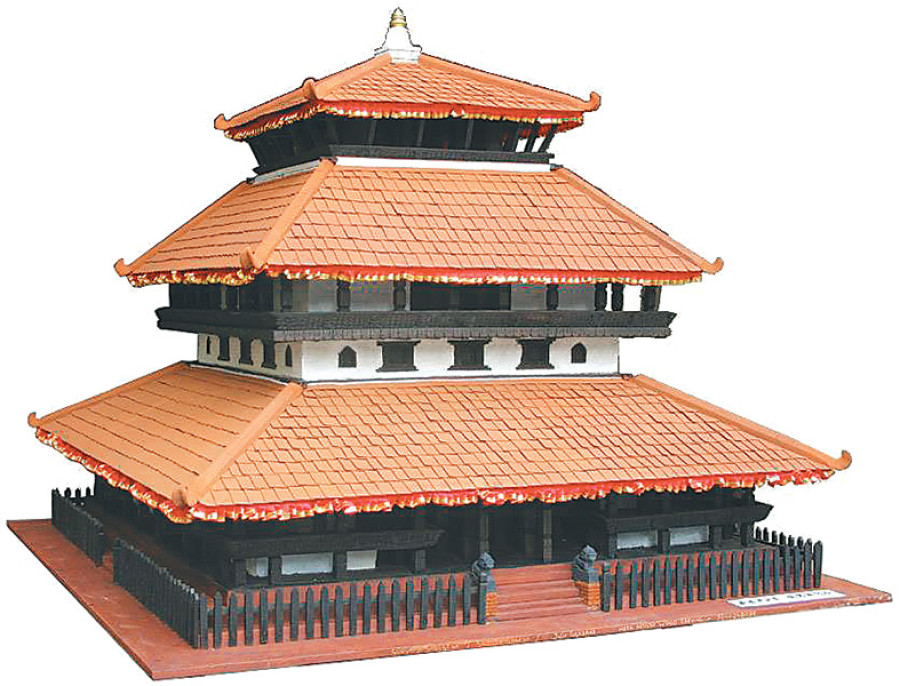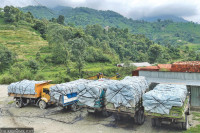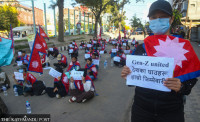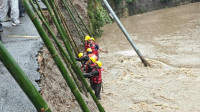Valley
KMC’s meddling in rebuild plan flayed
A recent decision of the Kathmandu Metropolitan City to co-opt the rebuilding of the historic Kasthamandap has drawn ire from the local community who have called the decision “arbitrary” and against the spirit of a legally-binding agreement signed in May that recognised the locals’ initiative for rebuilding the site.
A recent decision of the Kathmandu Metropolitan City to co-opt the rebuilding of the historic Kasthamandap has drawn ire from the local community who have called the decision “arbitrary” and against the spirit of a legally-binding agreement signed in May that recognised the locals’ initiative for rebuilding the site.
Following the outrage, KMC officials have defended their move saying that elected representatives’ interest in rebuilding Kasthamandap, a seventh-century monument, was the major factor behind the metropolis wresting the reconstruction charge from the Campaign to Rebuild Kasthamandap (CRK).
According to KMC Spokesman Gyanendra Karki, newly elected representatives have shown concerns and come up with their own plans for reconstruction of Kasthamandap, which was damaged during the 2015 earthquake. “Therefore this decision was taken,” he said.
KMC’s decision, however, stands contrary to a memorandum of understanding signed on May 12 between the KMC, the National Reconstruction Authority (NRA), the Department of Archaeology and the community-led campaign.
According to the MoU, CRK was given the responsibility of Kasthamandap reconstruction. Recently, the NRA permitted the KMC to rebuild the iconic monument, a decision which the community-led campaign had called “arbitrary”. Criticising the latest development, campaign Chairman Birendra Bhakta Shrestha clarified that the campaign and local community would not abide by the “one-sided” decision of the authority.
“This is not only arbitrary but an imposing decision over the community who wanted to protect and rebuild their cultural heritage,” protested Shrestha.
“This has trampled upon the movement which was completely volunteer-driven and developed a sense of ownership for conservation of cultural heritages.”
This is not the first time the KMC interfered in restoration of Kasthamandap, the oldest public building in Kathmandu Valley. Last month, KMC officials had vandalised the bamboo structure set up to protect the site from rain.
Besides tearing down the structure, they had also seized the keys to the site where campaign volunteers used to work, recalled Shrestha.
However, the campaign is not ready to give in to the move. “We are gathering public support for rebuilding the historical and religious monument. This is not just a physical building, but it carries a long-survived legacy,” shared Shrestha.
“By rebuilding this monument through community involvement, we also preserve the traditional building methods and promote community’s responsibility towards protecting such monuments. What’s wrong in that?”
KMC Spokesperson Karki said the authority over reconstruction of the Kasthamandap rested with the KMC.
“Rebuilding Kasthamandap was always an interest of the KMC. We also announced tender for reconstruction twice, but no bidder came forward,” said Karki. “Local community can still play the role of ‘watchdog’ and work in coordination during reconstruction.”
The practice of awarding the contract for reconstructing heritage sites to the lowest bidder has come under sharp focus following the earthquakes after rebuilding of important sites like Rani Pokhari, Jaisi Dega and Kasthamandap ground to a halt due to local protests.
Locals and heritage conservationists have been voicing concerns over how the practice of getting an inexperienced lowest bidder to undertake heritage conservation works invites corruption and malpractice.




 20.12°C Kathmandu
20.12°C Kathmandu









